Many of you have asked questions recently about how to set up special education work boxes or Independent Work Systems in special education classrooms. So, I thought I would take this month’s Workbasket Wednesday to show some examples of the way I’ve done it in the past. Later in July and in August I will talk about it again when I go into some detail about how I set up classrooms at the beginning of the year.
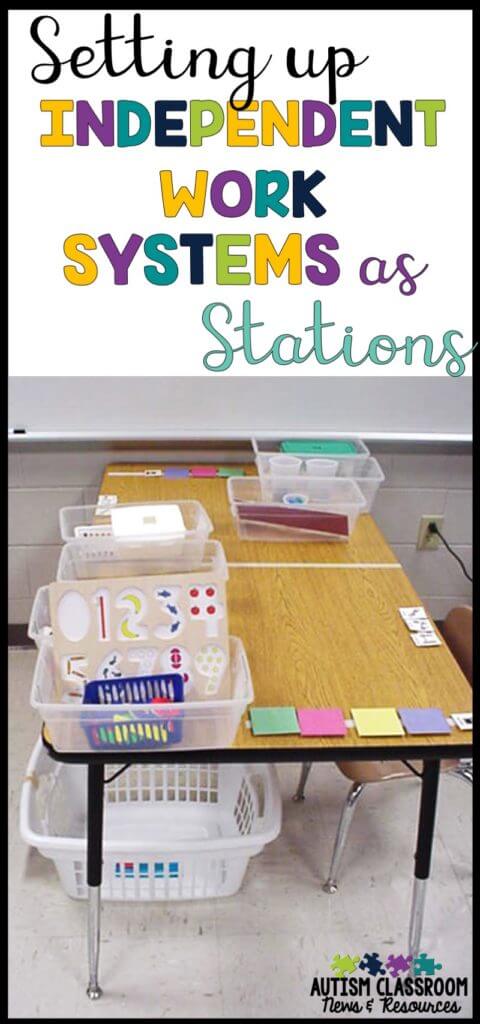
Independent Work System Basics
If you are unfamiliar with work systems, check out this post on What are Structured Work Systems for a full explanation. It also includes benefits of using them in the classroom, such as helping to reinforce IEP goals and building fine motor skills. For important elements to remember in deciding how to set up a work task system, check out the 10 Commandments of Structured Work Systems. The most relevant of these, as a refresher for all of us, is that special education work boxes require independent work tasks that the student has ALREADY mastered–they don’t teach new skills. The skill they teach is learning to work independently. Remember that by definition, you can’t do something independently if you don’t know how to do it.
Also, great tasks for work systems have to have a clear beginning and end–students have to know what they are expected to do and when they have finished. This means that tasks during independent work time must be things that don’t require someone else reading directions, a teacher asking a question or anything that the student cannot do by himself (unless you are deliberately breaking that rule to teach an advanced skill).
Models of Setting Up Independent Work Systems
So, with that out of the way, let’s talk about some of the different ways that work systems might be set up.
Individual Work Stations
In many traditional Structured Teaching (TEACCH) classrooms, the special education teacher sets up a task box system with different task bins for each individual student. The teacher generally travels around to each student to provide direct instruction and they are working on work systems the other parts of the time. I’ve worked in classrooms set up this way but ran into a couple of issues with it.
- Most classes have 8-12 special education students or more and there often isn’t room for each student to have a whole work station of his/her own.
- Storing the special education work boxes becomes difficult for multiple students to access them if they are not at the stage of independently retrieving the tasks on their own.
- Students don’t move much during the day and their environment doesn’t change.
- And my most critical concern is that students are being asked to work independently in the same place that they are working with an adult, which can be confusing. I like to keep teacher-directed instruction and independent work separate so students understand the different expectations.
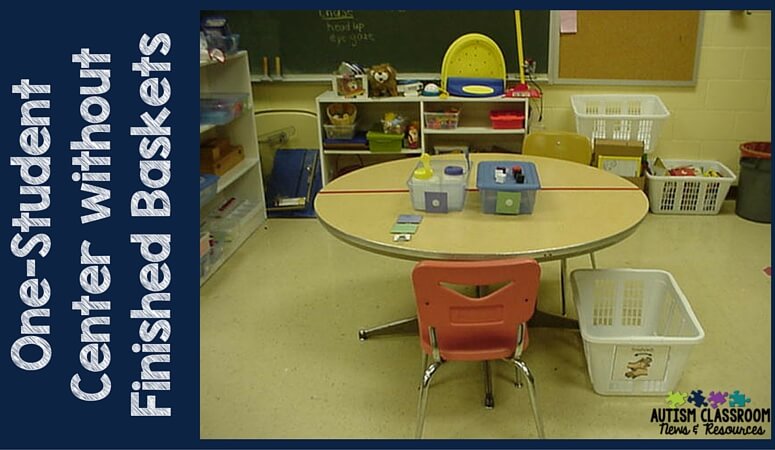
Work Station Lab
In some schools I’ve worked in, the special educator had an extra classroom and was able to set up that entire class as a work system lab. This has worked out particularly well for students working on vocational skills. Essentially there was a vocational lab that included work systems as part of the rotations or that had only mastered vocational skills for students to practice on their own.
Individual Student Desks
Some teachers have tried to combine work systems with the students’ own personal desk area. This kills two birds with one stone when setting up the room. However, I have some of the same concerns with it as I do with the individual work station.
- First, I often put student desks in a small group area where they are seated next to each other and we can hold group meetings. This means that there is little visual separation for the work box system.
- Student desks often don’t provide enough space for housing special education work boxes and materials needed for work systems. Again this is particularly difficult if the students aren’t able to independently retrieve and put away their own tasks.
- There is no room for finished file folders or work task boxes.
- Often the desk has more than one function so the cues for working independently are sometimes not as clear.
Independent Work Systems as Centers
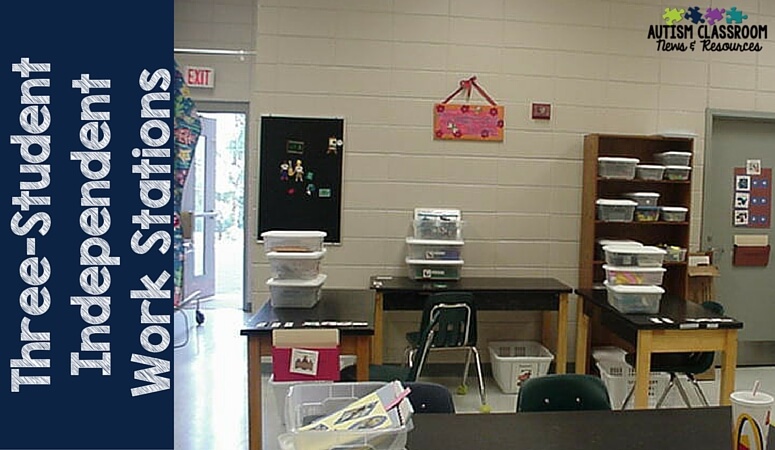
At the beginning of the year when I’m getting to know the students, it is easier to set up work systems as a center in the classroom. The students might rotate through each independent work station once or twice during the day depending on their needs. Sometimes I will have an academic center of work systems and a vocational or leisure set of work systems. Depending on the space in the room, these might be two separate areas of the room with different tasks, or they might be the same area with different IEP work bins in the areas.
Within the center I set up 2 to 6 stations depending on how many I need for the number of students rotating through. I might use individual desks or tables that I divide with masking tape to section off spaces. You can see some examples below.
Starting Out the Year with Centers
Typically at the beginning of the year, as we get to know the students, we set up the systems with a high system and a low system or designated high, medium and low systems. Academic tasks or tasks that require more advanced skill, like packaging tasks, are put in the higher. Low systems typically include simple put-in tasks with few pieces for students who are still working on independence. As the year goes on, we individualize the systems and keep track of the tasks the students can do independently. Then we can pull from that list to create the lesson plan and tell the staff member setting up the systems which types of task boxes to pull for each system.
This system provides a great solution that allows us to…
- Differentiate centers with space and visual support for working with the teacher or staff on new material versus the expectation to work independently.
- Store the task materials in the area in which they are being used for easy access during this specific time.
- Easily post visuals for staff and students designating which student is at which station and which tasks go in which station.
- Work with a variety of different types of furniture.
- Easily start out general and then become more specific as you get to know the students.
- Free up a staff member as students become more independent. These staff members can then help in another center or even add another center to the rotation (i.e., fewer kids in each place!).
Hopefully this gives you some great ideas to get started. As I wrote this I realized it really needed more detail than I had room for here. So I will be back on Sunday with another blog post including an overview of how I set up center-based work systems step-by-step.
More Workbasket Wednesday Resources

Looking for more ideas on special education work boxes or work systems and how they can be used? Check out the links in Resources below for more posts. And, I wrote about a book about them!
Buy From Amazon (including Kindle) (see my disclosure policy for more information about affiliate links).
GET ALL THE VISUALS AND ORGANIZATIONAL TOOLS YOU NEED to start independent work in your classroom.
These kits include an e-book with directions on setting up independent work systems and using the materials included, data sheets for tracking progress, visuals for the special education work boxes and schedules, what’s next visuals, and mastery sheets to keep track of which students have mastered which task.

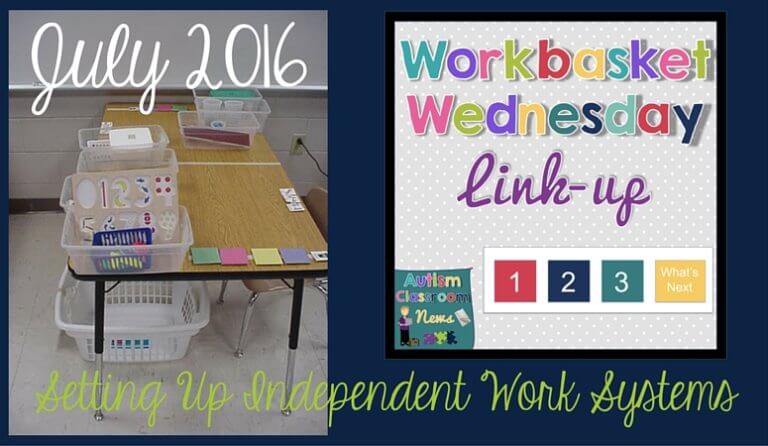
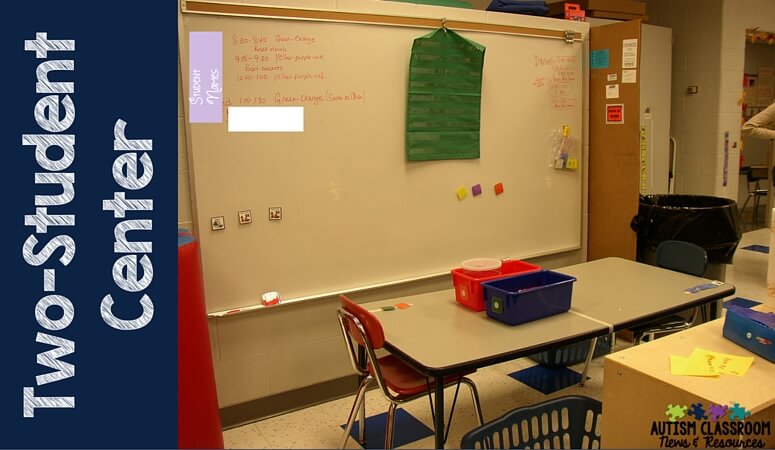
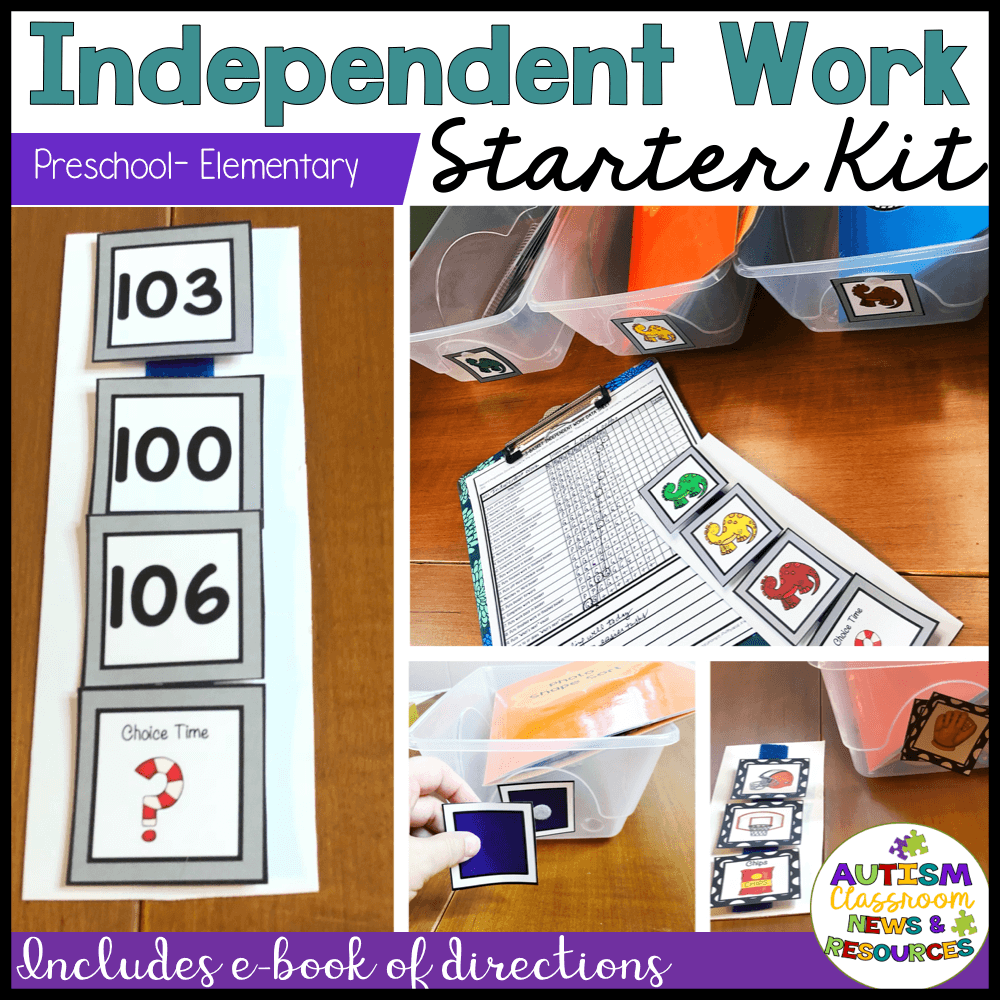
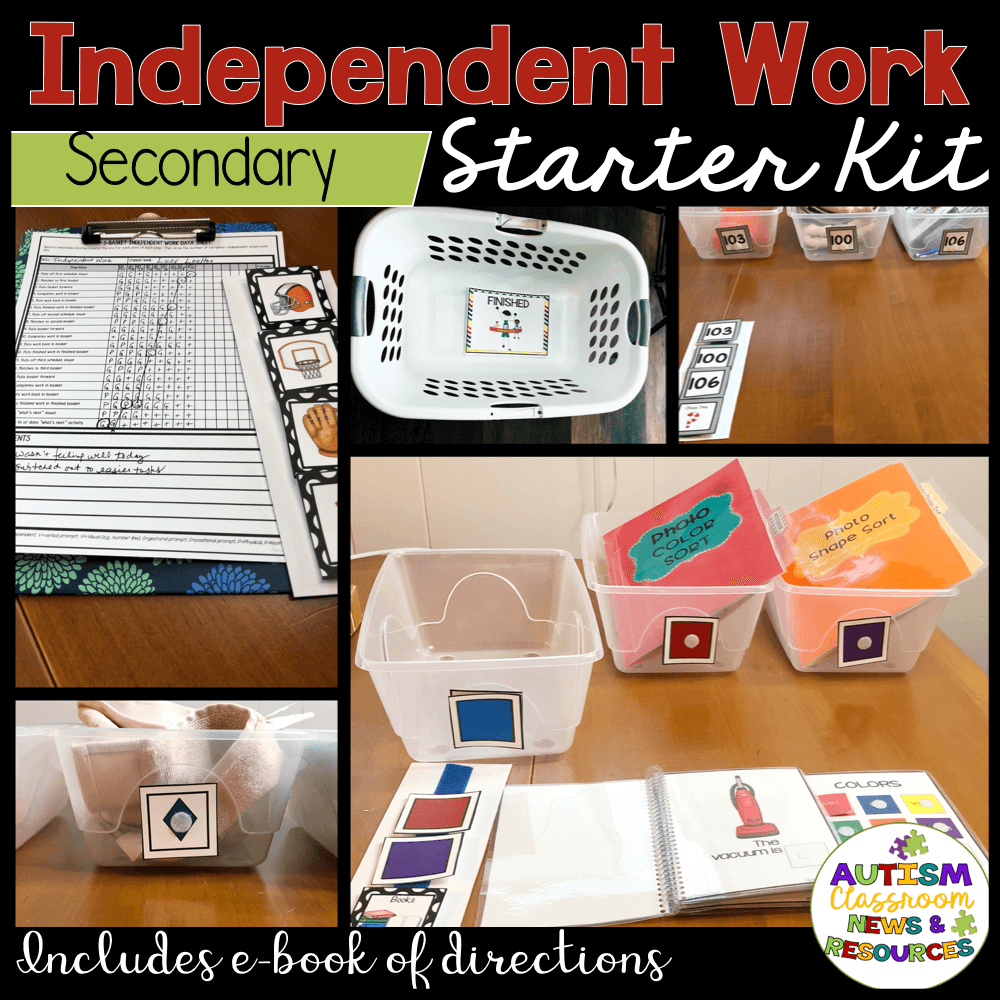

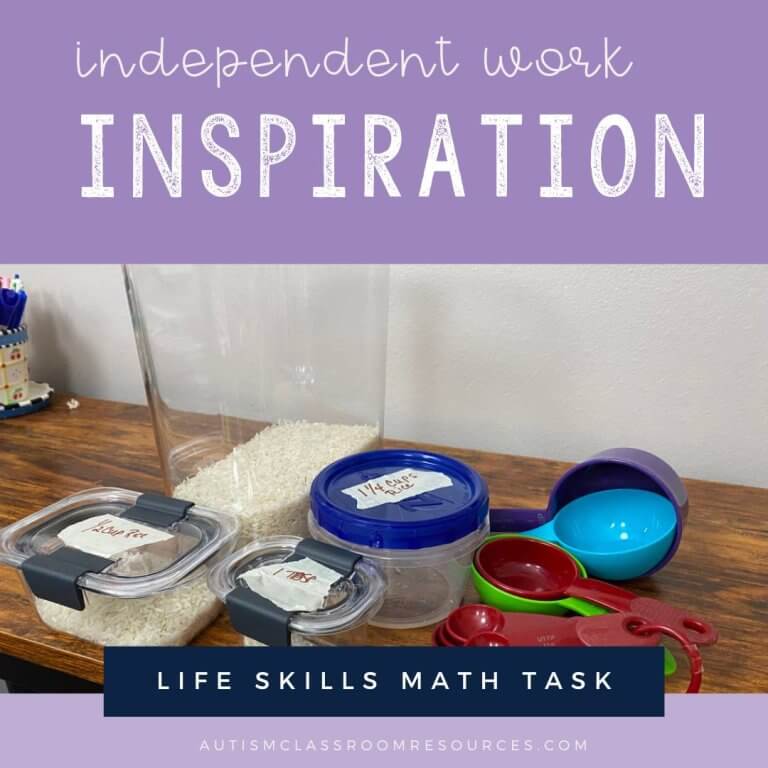
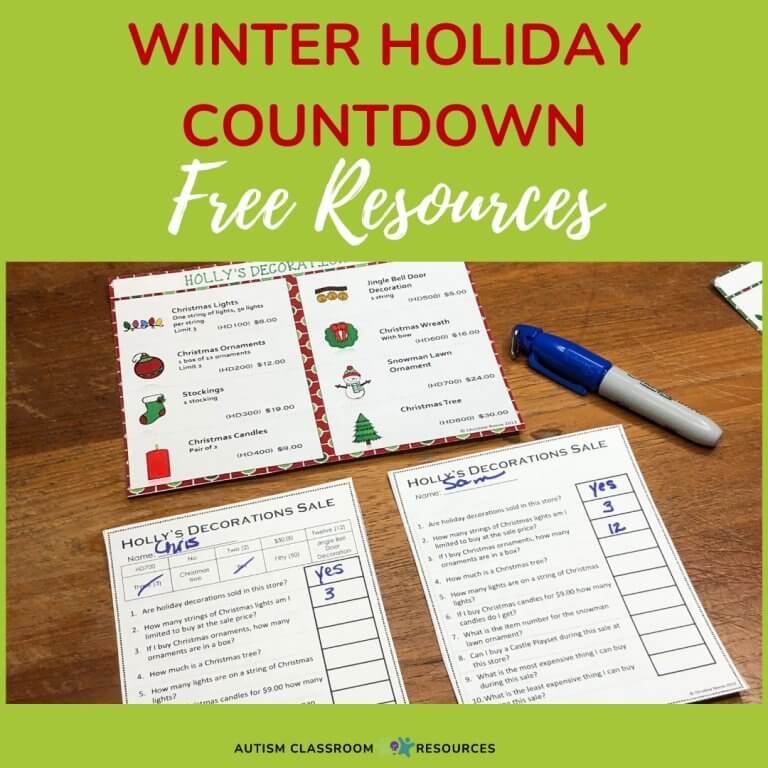
![Independent Work-3 Ways It can Become Your Best Classroom Management Tool [A sorting task in a shoebox to sort nouns from verbs on popsicle sticks into plastic cups]](https://autismclassroomresources.com/wp-content/uploads/2023/06/BLOG-22208-3-Ways-Task-Boxes-and-IW-Help-Classroom-Management-2-768x644.jpg)
